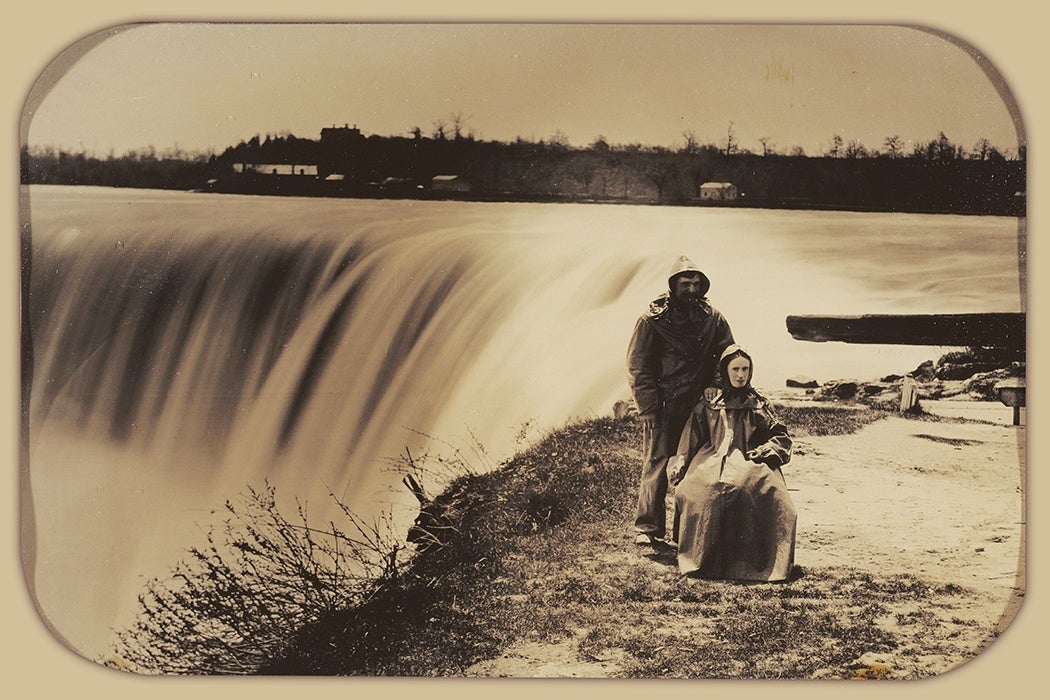This summer, will you travel to a beach, a national park, or maybe a local campground? Today, trips like these are often within reach of the average American family. But that’s a relatively new development. In a paper for The Journal of Economic History, Thomas Weiss explains how tourism went from an uncommon pastime for elites to a thoroughly middle-class activity.
Weiss writes that, in general, the first European settlers in America were simply too busy eking out a living to take a vacation. Besides, Puritans and Anglican values discouraged anything even remotely like lying on a beach drinking a margarita. And yet, as early as the 1660s, some Americans were traveling for relaxation, often heading to spas and mineral springs. Among those taking the waters in Virginia a century later was George Washington. Although people claimed the point was to cure an ailment or maintain their health, Weiss writers that spa trips were clearly a “fashionable indulgence.”
In the early nineteenth century, a few scenic destinations became hot spots for tourism, most notably Niagara Falls. In fact, by the 1860s it was so popular that travelers complained that souvenir sellers and aggressive guides had spoiled the place. Still, Weiss estimates that only around 1 percent of the nation’s population visited a spa or other tourist destination in 1860.
Tourism started to become more popular after the Civil War, thanks largely to the development of railroads, though it remained an elite activity. Trains brought travelers to the Jersey Shore and the Florida Coast, and hotels blossomed from Coney Island to San Francisco. Urban Americans headed to the mountains for camping trips, while others explored the restaurants and sights of the major cities. Because transportation was slow and required advance planning, tourists didn’t take quick overnight trips. Vacations meant an extended stay.
That changed in the early twentieth century as cars began populating the landscape. Developers built roadside camps, then cabins and hotels. Small, local attractions popped up everywhere, and major destinations benefited from auto travel. In 1916, around 30,000 visitors traveled to Yellowstone National Park, the majority coming by train. Two decades later, 409,000 people arrived at the park in cars.
By 1930, Weiss writes, more than 5 percent of the population traveled to a well-known tourist attraction each year, and many more clearly stopped at more obscure destinations. The notion of taking vacations had begun to extend into the middle class.
Weekly Digest
The basic form of tourism may have been established by World War II, but the scale of the activity changed dramatically in the post-war years. The growth of car ownership, rising middle-class wealth, newly established paid vacation benefits for many workers, and the advent of air travel all contributed to a tourism boom.
And that boom continues today. This year, AAA says a third of Americans will take a family vacation. Of course, that still means two thirds of us won’t. As a recent New York Times story pointed out, many families in the country can’t afford to take time off of work, or to send the kids to a summer camp. To some extent, vacations remain an elite activity.
*****
Read about Ken Ilgunas’s “sort of illegal” hike across the Heartland in “Backpacking Across ‘Stand Your Ground’ Territory” on Public Books.
Editor’s note: This page was updated to fix the broken link to “Backpacking Across ‘Stand Your Ground’ Territory.”







